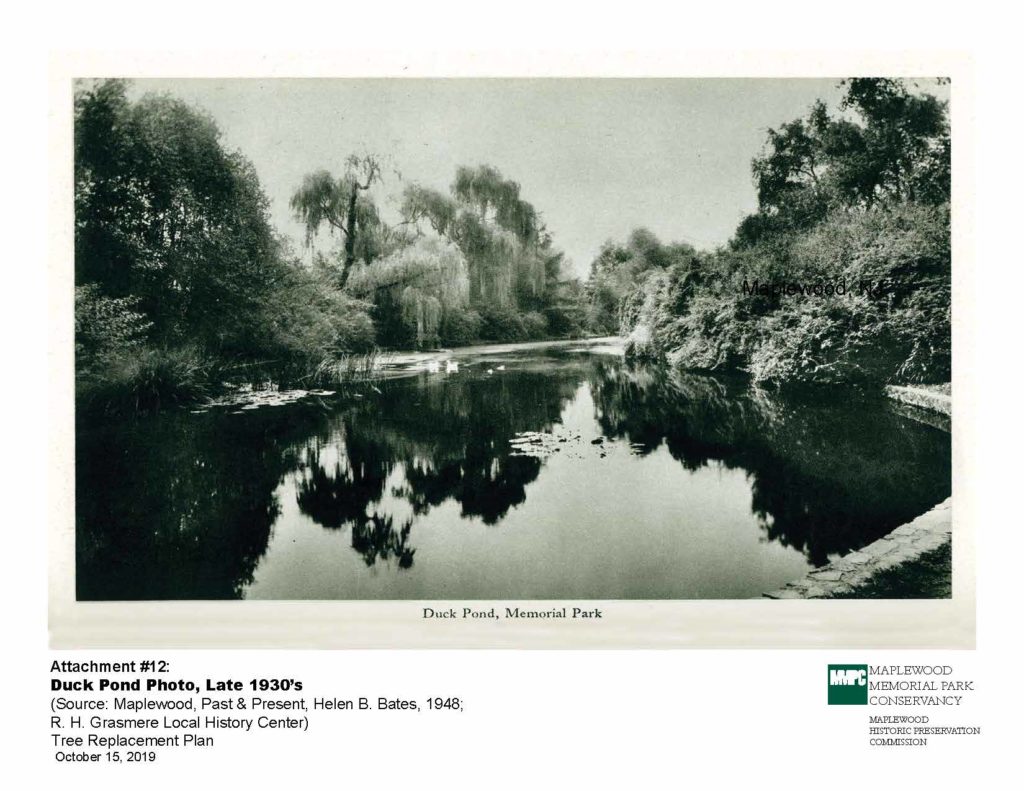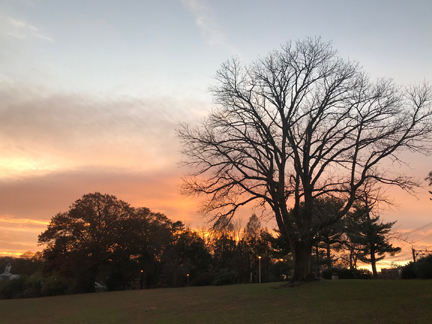Work Plan for Tree Replacement in Memorial Park
Project Authorization Application approved by the
New Jersey Historic Preservation Office April 2020
The Maplewood Memorial Park Conservancy, in partnership with the Township of Maplewood, developed a comprehensive long-term plan for tree replacement to restore, maintain, and enhance the aging canopy of our historic park. The Scope of Work for this plan is in two phases, 1-3 years, and 3-5 years. The Tree Replacement Master Plan was approved by the New Jersey Historic Preservation Office in April of 2020. The plan can be viewed below. In spring of 2021 the Township and the Conservancy planted 50 replacement trees based on this report.
Tree Replacement Master Plan
Maplewood Memorial Park was designed and constructed approximately 100 years ago by the firms of Olmsted Brothers and Brinley & Holbrook, primarily in a picturesque landscape style. Additionally, Park Supervisor Richard Walter installed numerous more unusual species of trees and plants during his long tenure, adding a special botanic element to the park as well. Today, the park is heavily used by citizens of Maplewood for various recreational activities and events. During its long existence the park has been well-loved and maintained by the Township of Maplewood. However, it has become harder for the local government to spend the time and resources needed to maintain the beauty of this long-lived and historic park. The Maplewood Memorial Park Conservancy was formed to fill this need and to undertake a careful assessment of the needs of the area and a plan for restoring our historic park and moving it forward for continued use by residents.
Climate change and its resulting pests and severe weather, heavy and sometimes changing uses, as well as expected life spans of individual species have resulted in the loss of many trees throughout the park. There is no existing record of all the trees that were lost or planted in the park during its history, nor do we have a complete planting plan for the original park. We can make an approximation of the original plan, however, using a 1922 Olmsted Brothers survey (Attachment #9), a partial Brinley & Holbrook planting plan from 1927 (see Attachment #10, annotated), and additional research on species used by the Olmsted Brothers in park design. Over the course of the last 3 years, the Conservancy has filed several Applications for Project Authorization with the NJHPO for the planting of 43 trees and the removal of 24 trees due to their death or ill health. Replacement trees were proposed in kind when possible but when not possible, others were proposed that have a similar profile in the tree canopy, can be found in other parks designed by these firms and are hardier for current conditions.
After tackling the initial concerns of trees that fell or were dangerous to pedestrians, we now propose a plan for tree replacement that will cover the next 10 years. Instead of filing individual applications, we are looking at a general plan that considers the current conditions of the trees and the likely need for replacement. This assessment has been carried out by Jennifer Ryan, a Rutgers University landscape architecture graduate who has been working with the Conservancy for the last two years. She has consulted with town arborist Rich Wolowicz, as well as employees at the Department of Public Works. She used Bond’s Tree Health Assessment (2012) and, additionally noted rotting trunks, large limb loss, and other signs of decline. Ryan looked at over 605 trees in the park and found that 201 of them (1/3 of trees in the park) are dying or at risk of dying within the next 10 years. Of these, 154 are in decline or dying and 45, while not presently in decline, are especially susceptible to current pests.
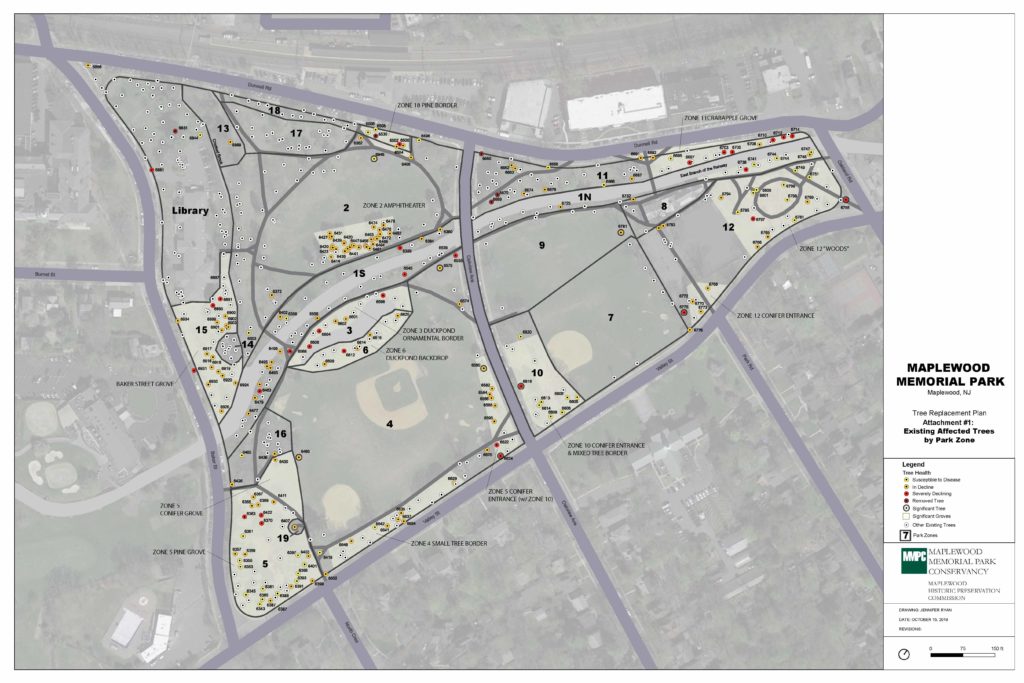
The tree replacement plan proposes the removal of these declining and dying trees in Memorial Park over the course of the next 10 years. If trees that are susceptible to pests fail, they will be removed as well. Trees will not be removed until it is clear that it is necessary. Attachments #1, 1a, and 2 provide details on the affected existing trees, including a map of existing tree locations, a table delineating the species and reason for decline of these existing trees, and photos of each tree. Trees are listed by park zone to assist in locating them on the plans.
To replace the failing trees, the plan proposes planting 265 trees. This includes the 201 identified above, and an additional 64 trees to replace those that had been removed prior to the current (2018) tree survey, provide additional specimens if a tree fails, or increase the amount of canopy created by particularly slow growing trees. Of the trees that are expected to die within the next 10 years, 125 will be replaced with the same species (“in kind”) and as close to their original location as suitable. Trees will generally be planted before the original tree is removed and have been roughly sited on the map. Final placement will take place in the field and follow the designer’s original intent. In 76 cases, replacing a tree with one of the same species (‘in kind’) is not appropriate due to current environmental threats, changing growing conditions or pests. Attachments #3 and 4 delineate our replacement strategy for the existing trees that will not be replaced in kind.
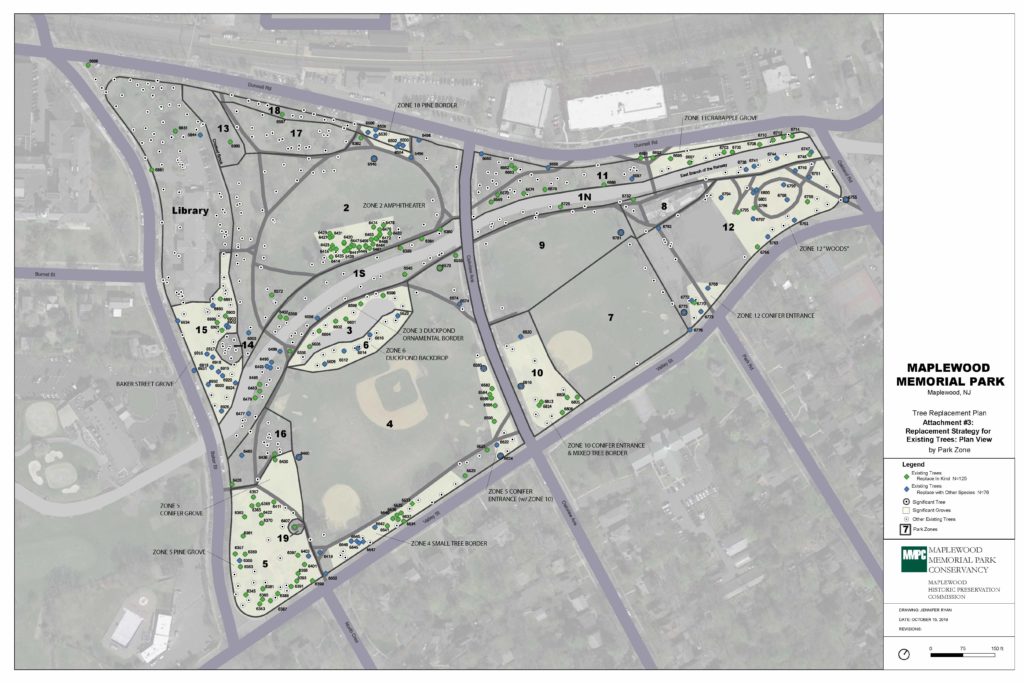
Trees will be planted in order of priority. To assist in ranking trees, some individual trees were designated as “significant,” or especially old, prominent or slow-growing specimen trees. Groups of trees related by location, species or function were identified as “groves,” which will be prioritized and replaced as a group. These categories are noted on all maps.
Trees that have died, are currently in decline, or are significant slow growing trees are the highest priority for replacement, while those that are declining but still seem strong are medium priority. Trees that are still healthy but susceptible to disease or those that are somewhat in decline but not able to be replanted until the current tree is removed are the lowest priority. Of the high and medium priority trees, a large number, 128, can be planted before the current tree is removed–only 31 trees will need to be removed before they can be replanted. The lowest priority trees include 45 that are susceptible to disease, but are either being treated for the pest or have not yet shown signs of decline, and 51 trees that cannot be replaced until the current tree is removed. Attachments #5, 5a, 6, 6a, 7, 7a, 8, and 8a are planting plans arranged by priority of planting which show the location of new tree plantings, the species to be planted, which tree it will replace, and, if not the original species, the rationale for its replacement.
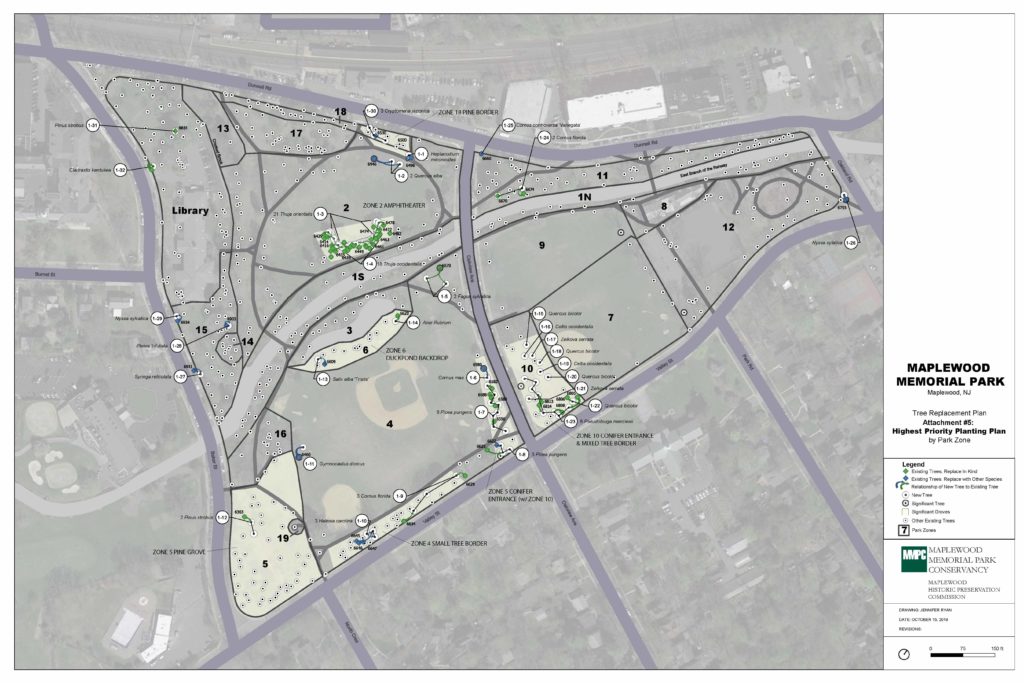
Replacement species were selected using a variety of strategies. In most cases, we tried to use trees that were original to the park or continued the botanic tradition of Richard Walter. We used an original survey (Olmsted, 1922) combined with the 1928 Brinley & Holbrook plan to determine trees that predated the park, but were subsequently removed, and trees that may have been planted. We do not have a complete planting list for the 1928 plan but a partial planting list and planting patterns of current trees and shrubs have helped us create a partial planting list (Attachments #9, 10). Old photographs (Attachment #11 and 12) of the amphitheater and plantings around the Duck Pond further informed our replacement strategy. If the original species is not suitable, replacement trees were chosen for their similarity in shape and size to the existing tree, hardiness of species, and use by Olmsted and Brinley & Holbrook in other parks. This work builds on other plans begun by a previous graduate landscape architect intern, Kimberly Tryba, who worked with the Conservancy in the two years before Jennifer Ryan.
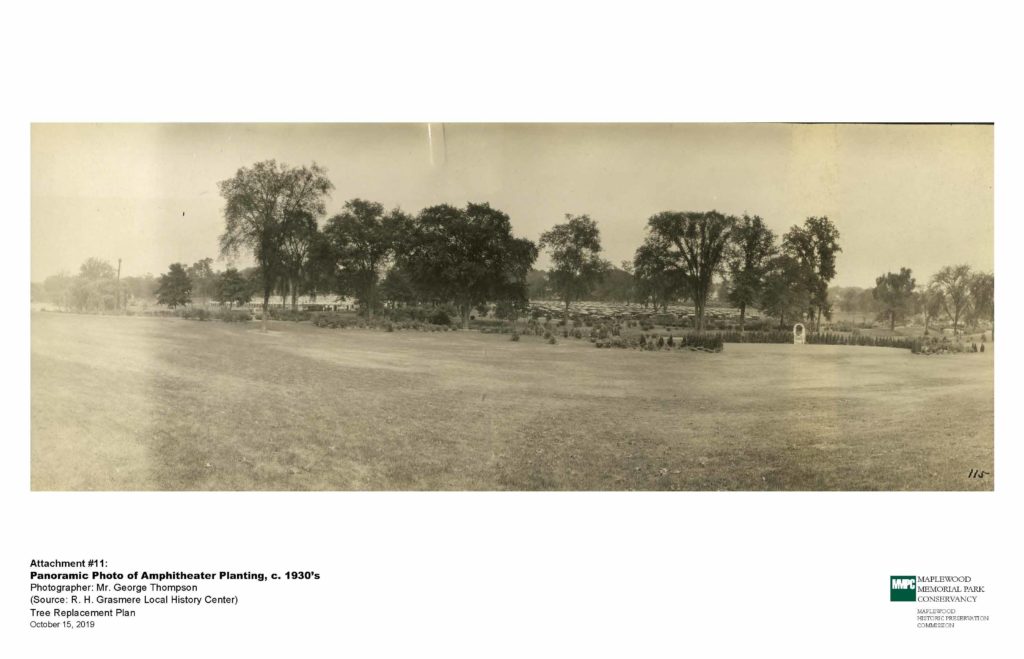
Trees of significant size will be purchased as available and cultivars chosen that are best suited to the conditions of each location. Tree removal and replanting will be undertaken by the Department of Public Works in cooperation with the Maplewood Memorial Park Conservancy. Planting of new trees will take place as soon as suitable trees are found and transplanting times are appropriate. However, the timing of tree removal will be delayed if the present tree still contributes to the Park’s ambience and space is available nearby in which to plant the replacement. In this way we hope to minimize the visual shock of the replacement program. Care will be taken to ensure the survival of the new trees and planting will be delayed until the following season if the ideal conditions pass before the tree can be planted.
If additional trees in the park are damaged or suddenly die and must be removed, they will be replaced with the same species as close as possible to the original location. As existing trees begin to show signs of decline, new trees of the same species will be planted proactively to replace these trees, accounting for the designer’s original intent. If an existing species not mentioned in this plan develops a disease or other problem that contraindicates the replanting of the same species, a suitable available substitute will be found and planted. Trees chosen as replacement species will be assessed before planting to ensure they are still suitable substitutes.
The approval of this tree replacement plan will enable the Maplewood Memorial Park Conservancy to move more smoothly and quickly toward its goal of restoration of the beautiful and historic landscape that is so integral to this community.
